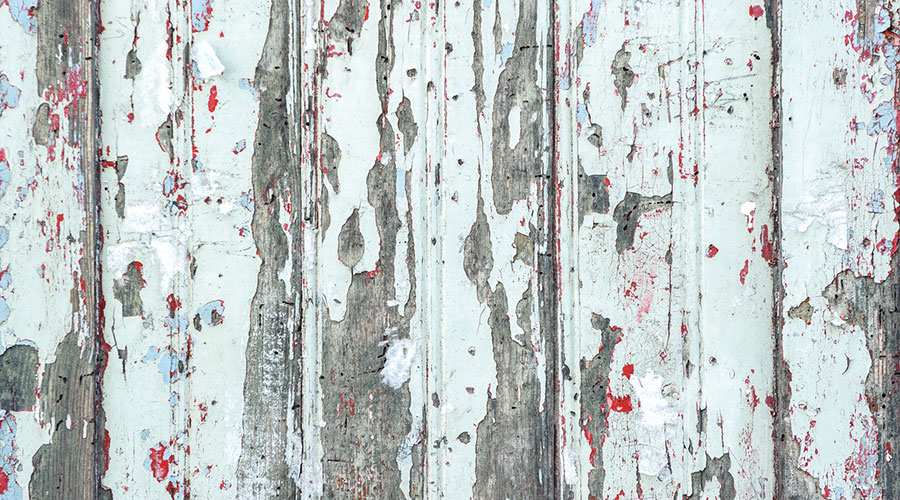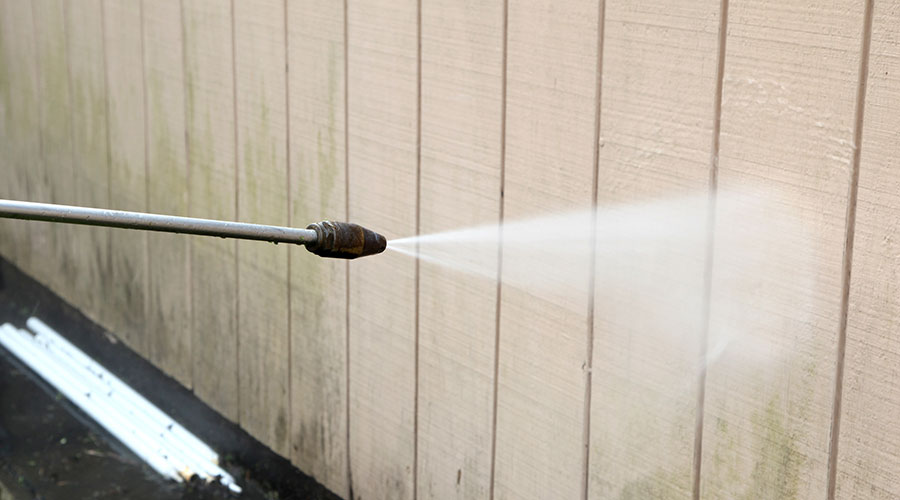Three things to know before you even crack open a can
‘Tis the season for outdoor paint projects!
Whether you’re repainting your house, fence or deck, or starting from scratch, the task can be daunting.
Vernon Ball (Computer Systems Technology ’92) has been in the painting business for 40 years and has taught in NAIT’s Painter and Decorator program for the last eight. He says the two major things to consider before kicking off a paint project are moisture and temperature.
“It shouldn’t have rained yesterday, and make sure it’s not going to rain tomorrow,” he says. Wet weather will impact how your paint dries.
Cool weather will as well. The temperature needs to be above 10 C, says Ball. If it’s not, you could end up with cracking paint due to improper drying.
Once you’ve considered those factors, it’s time to get started. Here are Ball’s perfect painting pointers.
Smooth surfaces make for smooth painting
 The first thing you’ll need to do is pressure wash the area you plan to paint. Aim for a few days before you plan to paint so it will dry in time, Ball says. Be gentle as not tear into the wood.
The first thing you’ll need to do is pressure wash the area you plan to paint. Aim for a few days before you plan to paint so it will dry in time, Ball says. Be gentle as not tear into the wood.
“You don’t need to blast it, but you want to get it good and clean,” he says. “That’ll take the loose, peeling stuff off.”
Once the area is cleaned, you can scrape away any leftover peeling pieces. Then sand the edges smooth of where you’ve scraped.
If there are areas where you can see bare wood, it’s time to prime.
“Get a good primer made by the same manufacturer as the paint you plan to use,” he says. “If your paint is sound and solid, you have no reason to prime the whole [surface]. You can spot prime those scraped-down areas.”
Use high-quality paint and tools

If you plan to build a deck, prime and paint the wood before you build it, Ball says.
“Decks are bad for peeling,” he says. Moisture from the ground can rise up into the wood, causing it to crack and peel. “If you paint all the sides of the wood, that will [protect it] and make a world of difference in how long your paint will last.”
You don’t need to buy the best paint on the market, Ball says. But don’t cheap out.
“Just buy the best paint you can afford,” he says.
He also recommends buying brushes and rollers that are designed for the kind of paint you’re going to use. Read the labels – they’ll tell you if the tool is best suited for a waterborne or solvent-based paint. He says waterborne is probably the better choice, since the technology is a newer.
“If you buy a solvent-based or oil-based paint, it may have been developed as much as 30 years ago and they haven’t changed the formulation of it much.”
If you’re just doing maintenance painting, you should be able to finish the job with just primer and one coat of paint, he says. If you’re working with wood that has never been painted, you’ll likely need primer and two coats of colour.
Protect your hard work
 Air pollution affects how long paint lasts, Ball says.
Air pollution affects how long paint lasts, Ball says.
“In our climate, you should be repainting every five to seven years,” he says. “If you live near an industrial area, you may need to do it more often.” The pollutants deteriorate the paint faster.
To help the paint job last longer, regularly hose off the area to keep dirt off and mildew at bay.
You should protect your paint job, Ball says, but you should split up the work to protect your body, too. Painting is a physically demanding task. Try splitting up the work if you can, he says.
“Some people think they need to do the whole house all at once. If you’re not changing the colour, you can do a wall a year and continually repeat.”